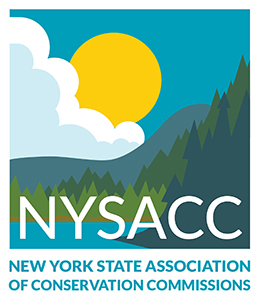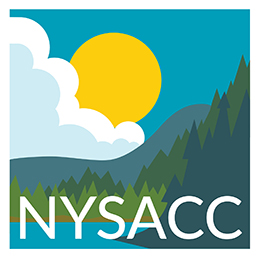Focus on Nature Centers Throughout NYS
Teatown is a 1000-acre nature preserve and education center located in the Lower Hudson Valley, whose mission is to inspire their community to lifelong environmental stewardship. They are located at 1600 Spring Valley Rd., Ossining, NY 10562.
The Preserve & Hiking Trails
Teatown manages a 1,000-acre preserve (the largest community-supported preserve in Westchester County). 15 miles of trails are open to the public from dawn til dusk, 365 days a year. The preserve also includes Wildflower Island, a 2-acre wildflower sanctuary.
Education
20,000+ individuals are impacted by their environmental education programs each year. Education efforts include a wide range of classes, lectures, and outdoor activities, on-and offsite, for students, families, adults, and under-resourced communities, all focused on nature and the role of stewardship in preserving biodiversity.
 Science & Stewardship
Science & Stewardship
The mission of their science and stewardship efforts is to preserve the region’s biodiversity. They tackle local and regional conservation issues through habitat protection and restoration, wildlife management, research and monitoring, and regional collaboration.
Regional Collaboration
Teatown works with several regional partnerships including the Environmental Monitoring and Management Alliance, the Lower Hudson Partnership for Regional Invasive Species Management, the Environmental Leaders Learning Alliance, and Regional Environmental Educators.
Volunteers
Last year, 507 volunteers contributed approximately 6,300 hours of trail maintenance, education, animal care, clerical duties, and special event assistance.
Animal Ambassadors
Teatown is home to over 60 non-releasable “Animal Ambassadors” that help educate about their species and wild cousins.
Camp
Approximately 600 children participate in Teatown’s Natural Science Summer Day Camp each year. We spend our days learning by exploring, discovering new things about ourselves, each other, and the earth, and developing friendships and respect for all living things.
Teatown Environmental Science Academy (TESA)
TESA is an intensive field research course for high school students. Participants study under experienced field scientists to develop a study, collect and analyze data, and present their findings.
Staff & Board
Staff: 19 full-time, 11 part-time, and 30 seasonal employees
Board of Trustees: 25 member-board
Examples from Recent Teatown’s Blog Posts
Preventing Extinction in New York: An Exercise in Problem Solving (click here)
 Hundreds of years of human development, hunting, pollution, and spreading invasive species have irreparably harmed many of the resources wildlife depends on to survive. Meet some of the species that policymakers and scientists are fighting to save right here in New York.
Hundreds of years of human development, hunting, pollution, and spreading invasive species have irreparably harmed many of the resources wildlife depends on to survive. Meet some of the species that policymakers and scientists are fighting to save right here in New York.
Have you ever strolled down the shores of Long Island and seen a piping plover scurry down the beach? Have you glimpsed a wild cat weaving between the trees in the Adirondacks and wondered if it could be a lynx or cougar? Have you kayaked on the Hudson and watched the olive-grey scutes of a shortnose sturgeon flicker just below the surface?
For most New Yorkers, the answer is no. These moments of natural wonder are few and far between because these animals, once numerous, are endangered in New York State. Hundreds of years of human development, hunting, pollution, and spreading invasive species have irreparably harmed many of the resources wildlife depends on to survive. Across the country habitat continues to be fragmented by roads, lawns, and new construction, while necessities like water are increasingly polluted, diverted, or disappearing in a changing climate.
While the situation may look bleak, all hope is not lost. A nation-wide network of scientists, policymakers, and concerned citizens work around the clock to protect imperiled species from these threats, and they’ve been remarkably productive. From the extraordinary recovery of the bald eagle to the dramatic comeback of the humpback whale, science has helped to inform critical regulatory protections like the Endangered Species Act (ESA) that put science into action. The ESA has been more than 99% effective at preventing extinction, but it relies on the ongoing support of citizens and scientists alike to continue its success.
Meet three of the species still recovering in New York
Spotted Turtle (Clemmys guttata)
Status: Special Concern*
These attractive turtles are frequently collected as babies to be sold as pets, severely reducing the wild population. To learn more, stop in to meet Larry, Teatown’s very own spotted turtle who was taken as a pet at an early age and now cannot survive on his own. Learn more here.
Northern Long-eared Bat (Myotis septentrionalis)
Status: Threatened**
The biggest threat to these tiny mammals is White Nose Syndrome, a disease caused by fungus that makes otherwise hibernating bats become too active, wasting critical energy stores they need to survive. Learn more here.
Piping Plover (Charadrius melodus)
Status: Endangered***
Nearly hunted to extinction for sport at the turn of the last century, their habitat is now threatened by coastal development and recreational activities that disturb nesting sites. Learn more here.
|
*Special Concern – Any native species for which a welfare concern or risk of endangerment has been documented in New York State. ** Threatened – Any native species likely to become an endangered species within the foreseeable future in New York State. ***Endangered – Any native species in imminent danger of extirpation or extinction in New York State. |
What’s All the Buzz about Pollinator Pathways? (click here)
By turning even the smallest available green spaces like flower boxes and curb strips into native plant gardens, communities are creating “stepping stones” for pollinators between larger habitat patches.
What is a Pollinator Pathway?
Pollinator Pathways are designed to connect pollinator species in developed areas with the resources they rely on to survive. In a fragmented landscape defined by parking lots and manicured lawns, pollinators like hummingbirds, bees, and butterflies can have a difficult time finding food and shelter. By turning even the smallest of available green spaces like flower boxes and curb strips into native plant gardens, communities are creating ‘stepping stones’ for these species between larger habitat patches.
Why do we need them?
Aside from their inherent value, pollinators are critical to our own survival. They are the reason we have food to eat. You’ve heard of the honey bee, but have you heard of the Kincaid’s cellophane bee or the willow mining bee? New York State is home to over 450 wild pollinator species, including hummingbirds, butterflies, beetles, and more. These small but mighty workers support the state’s more than seven million acres of agricultural land, pollinating local favorites like apples, berries, and pumpkins. In addition to their agricultural services, native pollinators support a healthy and biodiverse environment. Their importance cannot be overstated.
Despite their value, pollinators suffer from a multitude of anthropogenic stressors that have caused managed populations in the state to decrease by more than 50% over the past several years. Wild populations have suffered as well, but these declines have been harder to track without adequate baseline measurements. Pathogens, pesticides, habitat loss, and a lack of genetic diversity are just a few of the most pressing issues these species face. When habitat is fragmented by roads, buildings, parking lots, and other developments, pollinators lose access to basic resources. Fragmentation also causes populations to become isolated, decreasing genetic diversity and increasing the population’s susceptibility to disease. Pollinator Pathways are designed to bridge these gaps in order to sustain healthy populations.
Where are they?
Several communities in Westchester and Fairfield counties have already established their Pathways and are now working to make sure they are well managed in the long-term. Among New York towns, Pound Ridge is connecting their community to local ecology through their Pound Ridge Pollinators Patches and Pathways Project, while the Norwalk Pathway continues to grow by leaps and bounds in Connecticut. Is your town working on a Pollinator Pathway? Find out here.
How do I get involved?
If your town is already designing its own Pollinator Pathway, consider contacting the lead organization for more information on making your own yard better habitat for native pollinators. Start by avoiding pesticides and other lawn chemicals that kill native insects. Next, find out which native plants suit your available green space and start planting! If your community does not yet have a plan, considering leading the charge. A bit of organization and healthy dose of enthusiasm are enough to kickstart a Pathway of your very own. Lastly, don’t forget about the kids! Teatown offers school field trips to Cliffdale Farm where children learn about pollinators through interactive games and observation. For more information on starting a Pollinator Pathway in your town, click here.











You must be logged in to post a comment.